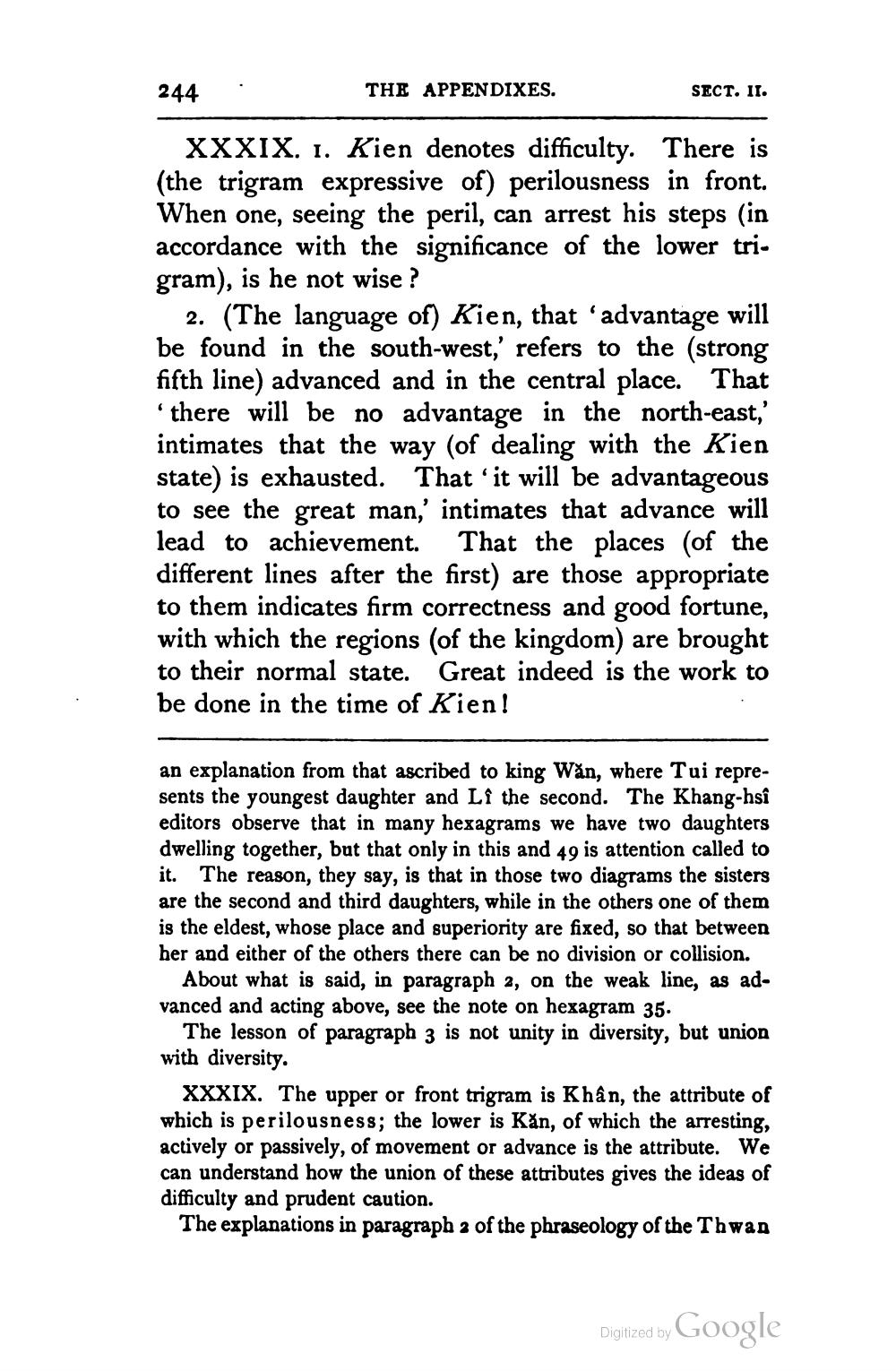________________
244
:
THE APPENDIXES.
SECT. II.
XXXIX. 1. Kien denotes difficulty. There is (the trigram expressive of) perilousness in front. When one, seeing the peril, can arrest his steps (in accordance with the significance of the lower trigram), is he not wise ?
2. (The language of) Kien, that 'advantage will be found in the south-west,' refers to the (strong fifth line) advanced and in the central place. That
there will be no advantage in the north-east,' intimates that the way (of dealing with the Kien state) is exhausted. That it will be advantageous to see the great man,' intimates that advance will lead to achievement. That the places (of the different lines after the first) are those appropriate to them indicates firm correctness and good fortune, with which the regions (of the kingdom) are brought to their normal state. Great indeed is the work to be done in the time of Kien!
an explanation from that ascribed to king Wăn, where Tui represents the youngest daughter and Li the second. The Khang-hsî editors observe that in many hexagrams we have two daughters dwelling together, but that only in this and 49 is attention called to it. The reason, they say, is that in those two diagrams the sisters are the second and third daughters, while in the others one of them is the eldest, whose place and superiority are fixed, so that between her and either of the others there can be no division or collision.
About what is said, in paragraph 2, on the weak line, as advanced and acting above, see the note on hexagram 35.
The lesson of paragraph 3 is not unity in diversity, but union with diversity.
XXXIX. The upper or front trigram is Khân, the attribute of which is perilousness; the lower is Kån, of which the arresting, actively or passively, of movement or advance is the attribute. We can understand how the union of these attributes gives the ideas of difficulty and prudent caution.
The explanations in paragraph 2 of the phraseology of the Thwan
Digitized by
Digitized by Google




